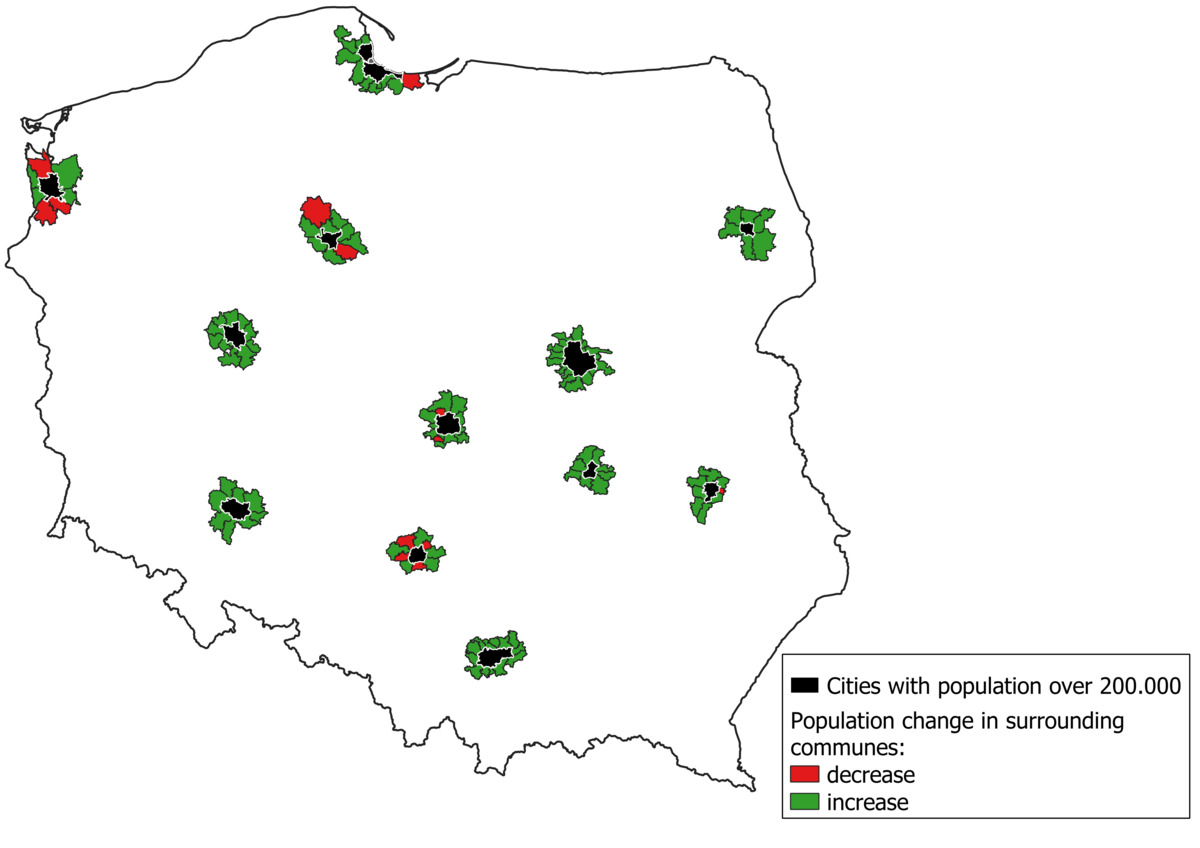Current issue
Online first
Archive
About the Journal
Aims and scope
Editorial Board
International Editorial Board
List of Reviewers
Abstracting and indexing
Ethical standards and procedures
REMV in Social Media
Contact
Instructions for Authors
Instructions for Authors
Manuscript formatting template
Title page
Highlights
Payments
‘Ghostwriting’ and ‘Guestauthorship’
Guidelines for Referees
Population change as an aspect of suburbanization of major cities in Poland
1
Department Econometrics and Statistics, University of Szczecin, Poland
Submission date: 2023-03-28
Final revision date: 2023-06-01
Acceptance date: 2023-07-14
Publication date: 2024-03-06
Corresponding author
REMV; 2024;32(1):13-25
HIGHLIGHTS
- in most of the analyzed cities the population has decreased
- for largest cities postive correlation between population changes in cities and neighboring areas was recorded
- between 2011 and 2021, the population in Poland fell by nearly half a million. While the total population of the entire analyzed area increased by almost 600,000
KEYWORDS
TOPICS
ABSTRACT
Cities function in people's minds as reservoirs of opportunities and possibilities. For many people, living in a city seems an attractive and logical life choice compared to areas perceived as provincial. However, the reality of the modern city is also associated with numerous nuisances. The occurrence of these disadvantages has led to the development of mechanisms intended, at least in principle, to counteract the ills of urban life. One such mechanism is the phenomenon of suburbanization. The outpouring of urban functions beyond its boundaries occurs all over the world. However, this phenomenon also entails exacerbating transport bottlenecks, requires a lot of local investment, contributes to the deterioration of the environment, and disrupts household time budgets. This paper addresses population change as one of the demographic aspects of suburbanization. The trends characterizing the outflow of population from cities and the inflow of population to suburban areas has been examined. The study covers several of Poland's largest cities using data from the 2011 and 2021 National Censuses. The main objectives of this study are to assess the scale of suburbanization in large and medium-sized Polish cities, so as to determine whether suburbanization occurs similarly regardless of city size. To identify those urban centers where the population change in neighboring municipalities is particularly high so as to raise the awareness of decision-makers and real estate market participants in relation to the challenges posed by suburbanization. In addition, using one city as an example, an assessment of how the influx of population affects number of transactions on selected real estate market was carried out. The results of the study may be useful in analyzing investment needs for various types of infrastructure, including roads and technical infrastructure.
We process personal data collected when visiting the website. The function of obtaining information about users and their behavior is carried out by voluntarily entered information in forms and saving cookies in end devices. Data, including cookies, are used to provide services, improve the user experience and to analyze the traffic in accordance with the Privacy policy. Data are also collected and processed by Google Analytics tool (more).
You can change cookies settings in your browser. Restricted use of cookies in the browser configuration may affect some functionalities of the website.
You can change cookies settings in your browser. Restricted use of cookies in the browser configuration may affect some functionalities of the website.



